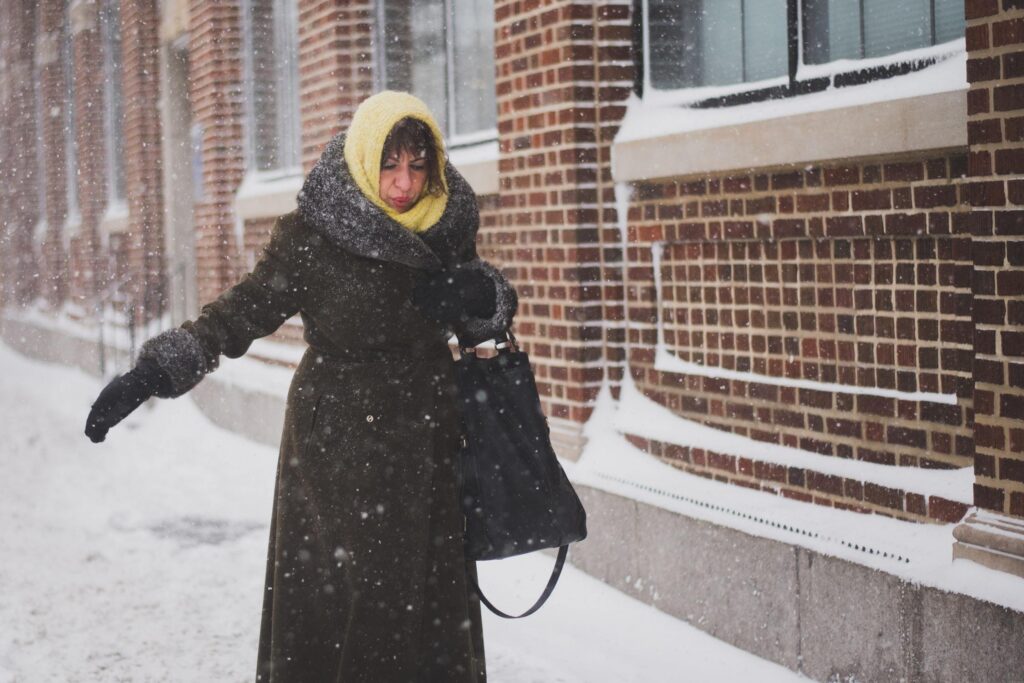
Snow! While we got a respite from major snowstorms here in the Mid-Atlantic/Northeast for the last few years, 2020 apparently wasn’t going to be complete without a large region being hit with a foot or more of snow all at once. Now that most of us have made some progress in digging out, let’s talk about some lessons learned and things to keep in mind as we clean up the mess.
Since it’s been a minute since we’ve had this kind of weather, most of us probably don’t have any recent experience driving in snowy and icy conditions. Unless you’ve done enough of it in your past that the skills and instincts have stuck with you, you’re probably pretty rusty with what you need to know and put into practice to drive safely when the roads are slick. Some of the tips are easy to remember: go slowly, leave extra room between you and other vehicles, brake gently. But they’re easier said than done when you’re sliding out of control. There’s a reason that officials plead with people to stay home during and after storms, and it’s the accidents that occur when people forget. Not only do they take up precious emergency resources, they block the roads from being cleared and being used to respond to other emergencies. The more you can avoid potentially dangerous conditions, the better – and they’re not just shady alleyways when you’re walking alone at night.
At some point, though, we all must venture outside even in the time of pandemic. Those who park outside are often tempted to clear off their cars only so far as they need to be able to peer out the windows. Don’t be that guy. The snow and ice that will inevitably blow off your car. If you’re lucky, it will come off in a puff of snow and only briefly affect visibility for those behind you. For the less fortunate, large chunks will come off and hit other vehicles, sometimes causing significant damage and additional accidents as drivers are surprised by the impact. Somewhere in between, you leave behind debris in the road that can result in swerving drivers or slippery ice. Better to take a few minutes to clean off as much as you can reach than to leave that kind of trail of destruction behind you. It might not be your safety that’s directly affected, but setting that example and encouraging that behavior can be what keeps you from running into those problems from someone else.
Whether you have a car or not, you’re still probably going to be outside some. How many of you already had your winter clothes out and ready to go? And if not, how many of you went out anyway in your late fall jackets, thin gloves, and regular shoes? For a quick walk, that’s probably fine, but frostbite and hypothermia can come on faster than you think, especially if you’ve let yourself get soggy. Just tingling and shivering are early warning signs, and getting numb and uncoordinated mean that danger is on its way. I don’t know about you, but I can think of many winter outings when I stopped being able to feel my fingers and toes, maybe even started having trouble talking, and all of that is no bueno. At the very least, you need to put on a few extra layers before you go out, limit your time outside, and get yourself dry and warm as soon as possible after. By the way, don’t just think about cold injuries when you go out. You know how cars slip and slide? So can you. Walk slowly and carefully, keeping in mind that you might not be able to see ice on the ground or obstacles under the snow.
Many of you who have to go outside are heading there because you need to shovel and salt. Hopefully, you actually had those before the storm because as always, waiting until the last minute means you might not be successful (same goes for your French toast supplies). Unless there’s barely any accumulation or the snow is very powdery, shoveling is hard physical work. It’s no coincidence that lots of snow and lots of heart attacks go together, as people who aren’t in the best physical shape go out to shovel. Even if you are in good shape, the movements associated with moving snow around can cause strains and other injuries, not to mention plain old soreness from using muscles you’ve forgotten you had. Being tempted into doing too much here can lead to regret later. If you’re paying that price right now, consider getting a snowplow or hiring help before the next storm rolls in. And maybe you don’t need to finish making the driveway and sidewalk pristinely clear right now, okay?
Oh, and one last thing. For those of you who live somewhere where “savesies” for parking spots are a thing, don’t get caught up in an actual fight about it. If you lose your spot, let it go. It sucks, I know, but walk away instead of seeing if that fight will lead to you being punched, shoved down and hitting your head on the curb, or worse. All those things happen, and you don’t want to find out who is willing to escalate that far. And for the love of life, don’t take someone’s saved spot. Not because they have the right to it, whether or not they do, but because you don’t want to find out what someone is willing to do to defend what they perceive as their property. Right or wrong isn’t the point and even rock star parking spots aren’t worth it.




